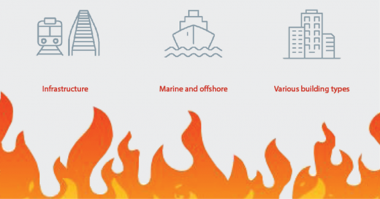Danfoss and The Pennsylvania State University at Philadelphia last week conducted a workshop to explore the impact of energy storage on U.S. resilience and the United Nations net-zero carbon buildings program. The workshop was designed to launch preparations for the next Danfoss EnVisioneering Symposium, tentatively scheduled to be held in Washington, DC, in May 2018, which will offer briefings by research professionals and industry leaders, along with in-depth roundtable discussion, on electrical power resilience with a focus on building-power integration. It is one of several Danfoss initiatives to strengthen the industry dialogue on energy sustainability and support the UN Economic Commission for Europe efforts toward global adoption of its Framework Guidelines for Energy Efficiency Standards in Buildings.
Resilience has emerged as a critical issue for sustainability strategy and energy storage is expected to play a vital role in addressing the resilience challenge, along with grid modernization, distributed energy generation, and improvements in building energy efficiency. A group of 20 private sector and academic thought leaders assembled for the workshop session at the Philadelphia Navy Yard, which included four formal presentations:
- Market Transformation: Grid, Building and Energy Storage Systems Integration
Kevin Wright, Co-Founder and President, ProtoGen Energy - Ice Battery Energy Storage
Mike Hopkins, Chief Executive Officer, Ice Energy - Thermal Mass Energy Storage
Vince Cushing, Chairman and Chief Technology Officer, QCoefficient
William Hederman, Senior Fellow, Kleinman Center for Energy Policy, University of Pennsylvania - Flywheel Energy Storage
Eric Murray, President and Chief Executive Officer, Temporal Power
The discussion underscored important linkages between technology, preparedness, and economic growth; the innovation required for resilience needs to be tailored as well to strengthen productivity and competitiveness even while cutting emissions and supporting a stable and secure infrastructure platform. Such a complex strategic agenda means a multiple-use approach to energy storage: using energy storage as an enabling technology across the generation-grid-building spectrum for long-, mid-, and short-term advantages in shifting to fossil-free generation. And that requires development and deployment of widely varied storage technologies with quite different functionalities. Storage can mean holding energy for a year, a day, or as little as fifteen seconds to buffer the impact of variations in renewable power flow. It also means creating novel collaborations to align incentives for the adoption and finance.
“Advances in building systems, macro-grid, micro-grid, and distributed electric generation technologies cannot create paths to electrical power resilience or a net-zero carbon society without deployment of multiple energy storage technologies,” observed Lisa Tryson, director of corporate communications and public relations, Danfoss. “Finely tailored applications are critical to the management of tomorrow’s power generation regime, even while playing a role in electricity cost containment for both grid managers and customers. And whether one looks to immediate challenges, mid-term goals, or long-term aspirations, energy storage technology is today under-utilized.”
Danfoss engineers technologies that enable the world of tomorrow to do more with less. We meet the growing need for infrastructure, food supply, energy efficiency and climate-friendly solutions. Our products and services are used in areas such as refrigeration, air conditioning, heating, motor control and mobile machinery. We are also active in the field of renewable energy as well as district heating infrastructure for cities and urban communities. Our innovative engineering dates back to 1933 and today Danfoss is a world-leader, employing more than 25,000 employees and serving customers in more than 100 countries. We are still privately held by the founding family. Read more about us at www.danfoss.com.





Comments